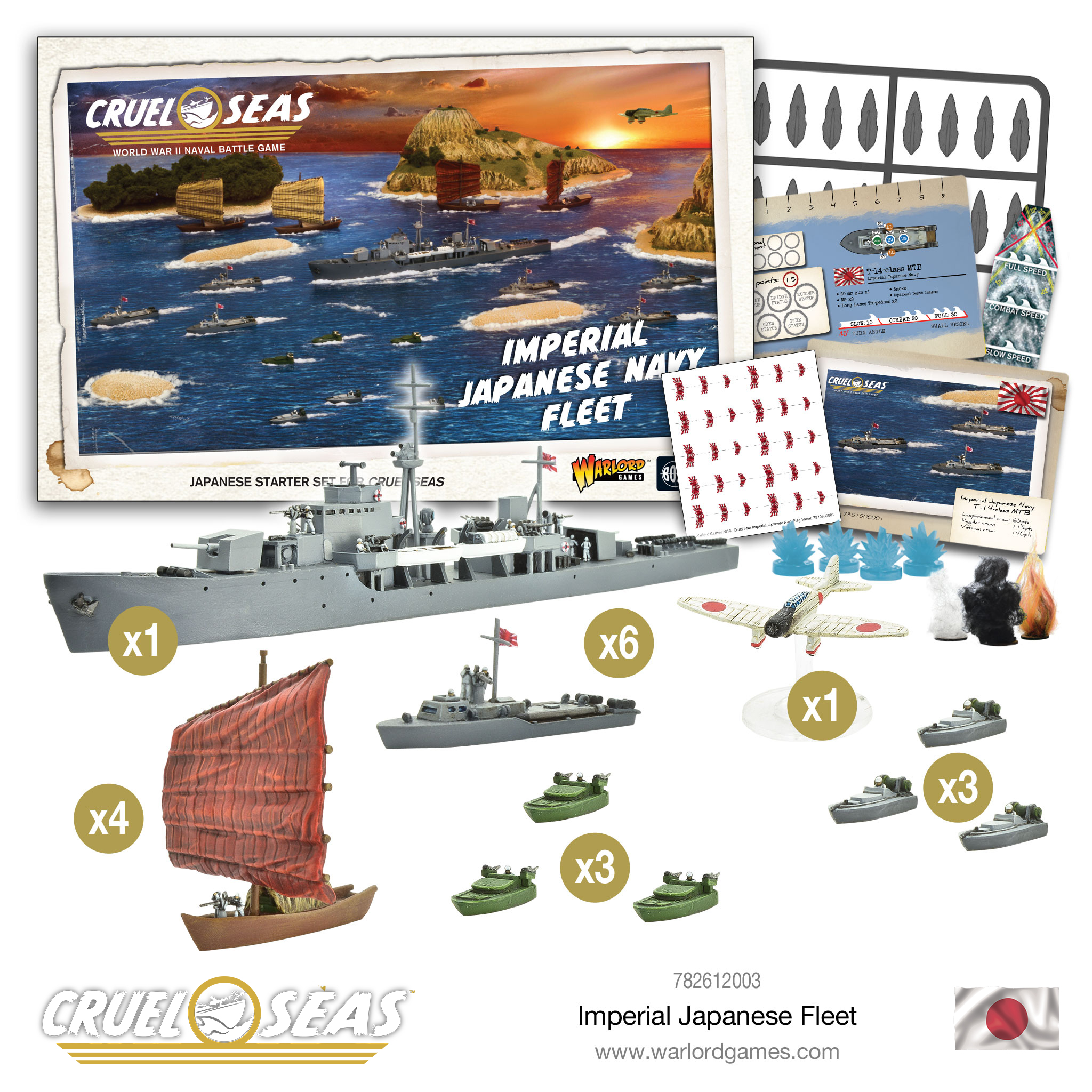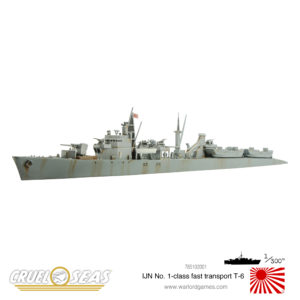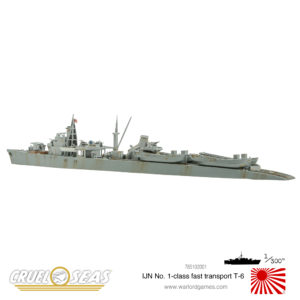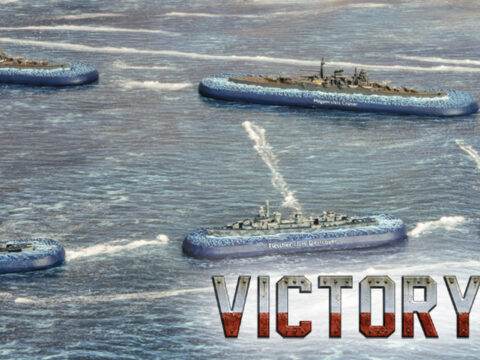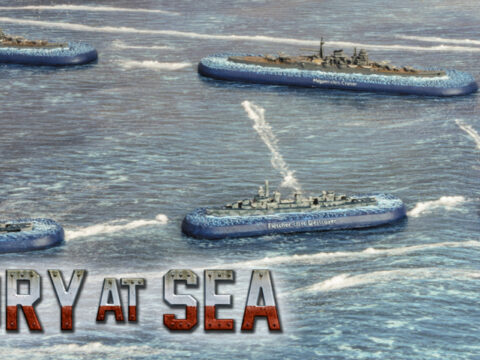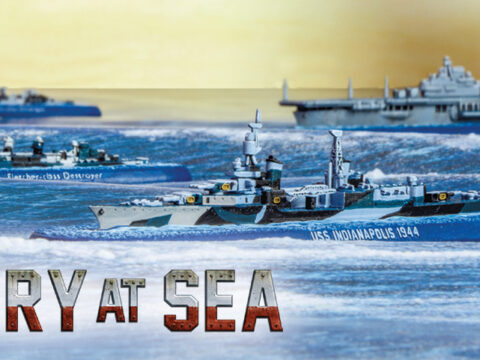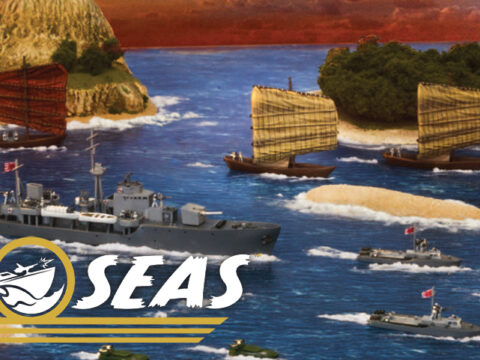Built as a need to more effectively transport troops under the hail of American aircraft, the No.1- Class Fast Transport launches for the IJN in Cruel Seas.

No. 1 Class
In 1943, the Imperial Japanese Fleet was suffering from the effects of American air superiority. Though some Destroyer vessels had been converted to transports, this was still not meeting the demands of getting sufficient troops and equipment to the front. The IJN general staff thus concocted a plan to develop a fast transport capable of rapidly landing troops, cargo, Daihatsu landing craft or Type 2 amphibious tanks.
The development led to a design that could be constructed using mass production techniques. This meant that most of the 15 ordered and built at Kure Naval Arsenal were completed within 80 days. Based on the Matsu-class destroyer hull, space for cargo and troops was made simply by removing one set of engines. As a result, the vessel weighed in at around 1.500 tons and could reach speeds of 22 knots.
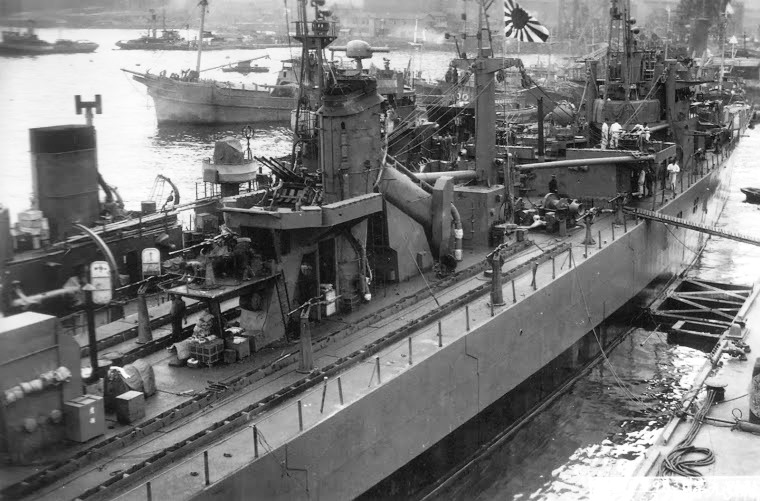
No. 1 Class Fast Transport showing triple, twin and single 25 mm Type 96 AA guns and single 13 mm Type 93 machine guns.
The design featured a distinctive sloped stern, and rails and rollers capable of rapidly launching landing craft without sacrificing speed. Later designs were amended to allow for 46-ton Type A “Ko-Hyoteki” and 59.6-ton Type D “Koryu” midget submarines and “Kaiten” human torpedoes and Shinyo explosive motorboats (EMB) to be carried. The class was equipped with Anti-aircraft guns, depth charges, radar and sonar.
Fast Transport T-6
T-6 was launched on 25 May 1944 but did not depart from Kure Sjipyards for Manila until September of that year. It ferried troops between Manila, Cagayan and Ormoc Bay. During this time it suffered from constant harassment by repeated air attacks but did not suffer heavy damage.
The ship’s luck ran out on 25 November 1944. Having arrived at Port Balanacan in the Central Philippines along with transports T-9, T-10 and the destroyer ‘Take’, the convoy found itself assailed by American aircraft of Task Groups 38.1 and 38.2. Both T-6 and T-10 are sunk, though T-9 and ‘Take‘ escaped with minor damage.
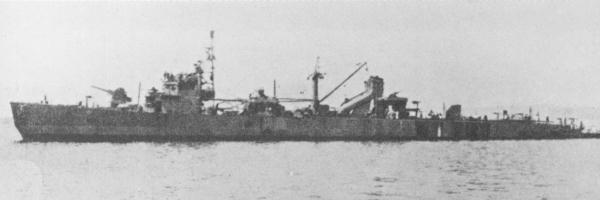
Landing Ship T-4 on 22 June 1944
In Cruel Seas
Based on a destroyer hull, the No.1- Class Fast transport makes for a relatively durable and versatile addition to any IJN fleet.
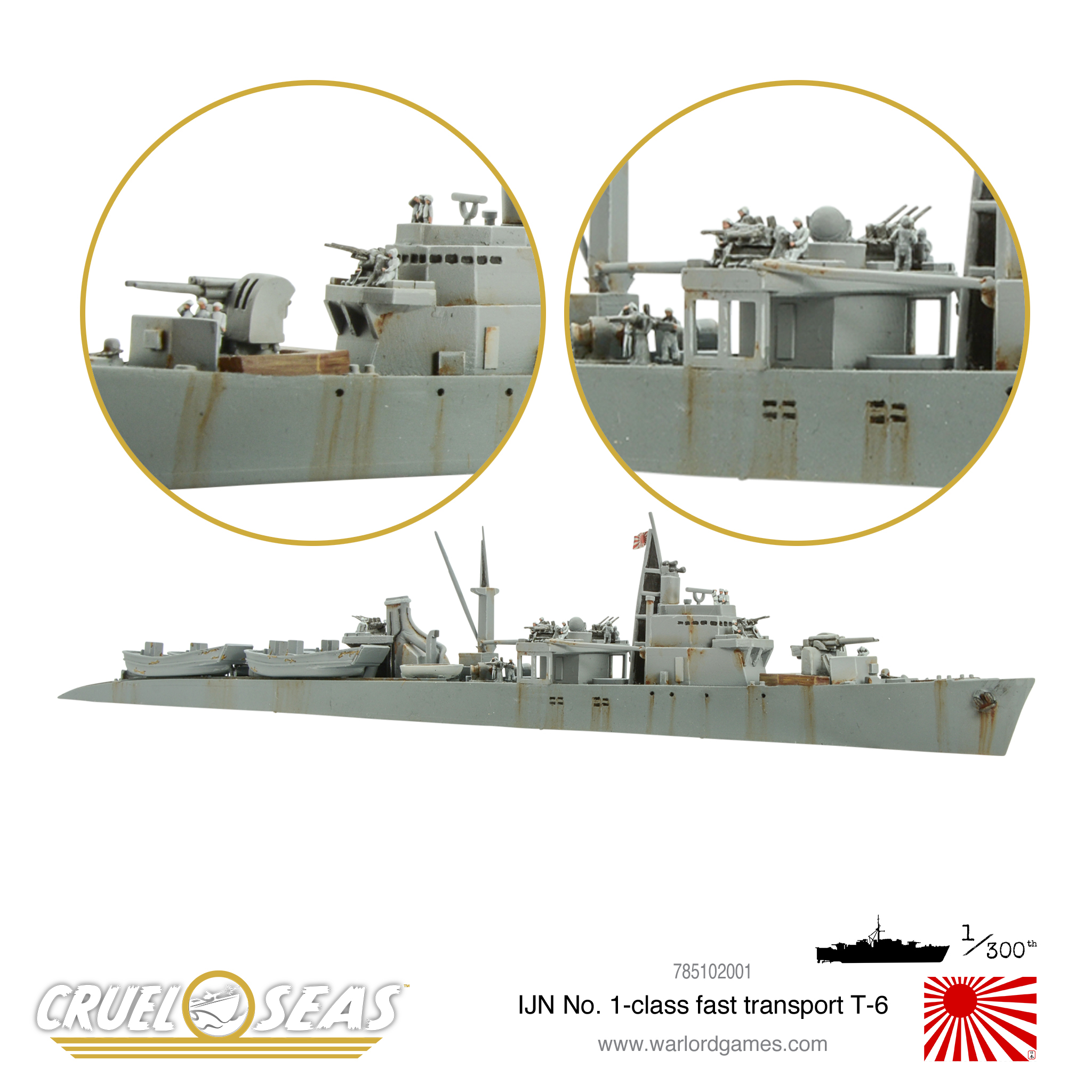
Contains 1 resin and metal vessel, supplied unassembled and unpainted.
Get started with the IJN
Cruel Seas focuses on the cat and mouse hunts that happened nightly in the Philippines, Guadalcanal and the Solomon’s. They could be IJN sub chasers stalking a crippled US submarine, or mine-layers playing their trade at night. Most commonly it will be Japanese barge convoys defending themselves in shallow water against rapacious PT boats. Turning the tables, a late war game could be played out with American landing ships and the terrifying Shin’yo Kamikaze craft.
The IJN, therefore, is an interesting mixture of the very sophisticated and the very amateur, boldness being a connecting factor whether in battleships or tiny craft. It is a do-or-die force, get in close and things will go well, dither or maintain the range of the allied technology and firepower will overreach you.
